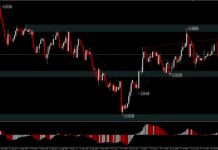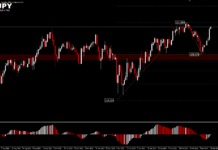US, EU, UK, and Canada sanction various Chinese officials on alleged human rights abuses in Xinjiang, with China responding with punitive measures against European officials. Meanwhile, Beijing issued some tit-for-tat sanctions of its own. There’s been little discernible impact on equities, however. The bullish impacts of the improved stability in Treasuries and the drop in yields are overwhelming the negative aspects of renewed tensions with China. The USA100 is over 1.6% higher, while the USA500 is up 0.86%, with the USA30 lagging with a 0.22% gain. However, while yesterday, stock markets welcomed the correction in yields, sentiment turned very cautious overnight and GER30 and UK100 futures are down -0.4% and -0.6% respectively.
Across the EU virus developments look worrying and officials are clearly fearing that the long holiday period over Easter will further fuel the more infectious variants. The aim is to try and restrict family parties and the overall movement of people, and while the UK is further ahead on vaccinations, officials there seem to be going a step further and considering hefty fines for people traveling abroad without a good enough reason. More pain then for travel and tour operators, which were already struggling yesterday. Fears of escalating tensions with China are adding to the negative risk backdrop.
The risk backdrop has led to a backdrop of ebbing stock markets and a boost of US Dollar and Yen . Anxieties are running high on both the US and EU sanctions. The Dollar has traded firmer in the early London session, diverging once again with Treasury yields, which has softened. The biggest mover has been the New Zealand Dollar, which plunged some 1.5% against the Greenback in posting a three-month low at 0.7055. News that the New Zealand government will be introducing taxes aimed at deflating a bubbly housing market sparked a selling spree of Kiwi Dollars. The move is indirectly intended to allow the RBNZ to maintain low interest rates after property prices were included as a consideration in the central bank’s remit just last month.
NZDJPY has advanced considerably since last March’s mania from the 59.50 area hitting the 25-month high of 79.20 in February. The pair turned below 20-day SMA this week while today, the market is in a sell off retesting the nearby Support at 50-day SMA.
Looking at momentum indicators, the daily RSI is sloping downwards below neutral zone, while the MACD is losing momentum below its trigger line in the bullish territory. However, the Bollinger band is flattening failing to follow yet the downside structure of the price.
Should the pair manage to strengthen its downside tendency, the next Support could come around the 73.50 area which coincides with the December 2019 top but also the breakout of the 20-week SMA which overlaps the 38.2% Fibonacci retracement level since the 2020 bottom.
However, if prices are unable to move lower, the risk would shift to the upside with the 2018 and 2017 highs at 80-83.00 coming in focus. A spike above the 2021 highs above 79 would signal a resumption of long-term rally.
To conclude, NDZJPY is in an ascending movement in the long-term timeframe and any decreases beneath the uptrend channel and the 200-day SMA may switch the current view to neutral.
Click here to access our Economic Calendar
Andria Pichidi
Market Analyst
Disclaimer: This material is provided as a general marketing communication for information purposes only and does not constitute an independent investment research. Nothing in this communication contains, or should be considered as containing, an investment advice or an investment recommendation or a solicitation for the purpose of buying or selling of any financial instrument. All information provided is gathered from reputable sources and any information containing an indication of past performance is not a guarantee or reliable indicator of future performance. Users acknowledge that any investment in Leveraged Products is characterized by a certain degree of uncertainty and that any investment of this nature involves a high level of risk for which the users are solely responsible and liable. We assume no liability for any loss arising from any investment made based on the information provided in this communication. This communication must not be reproduced or further distributed without our prior written permission.



















